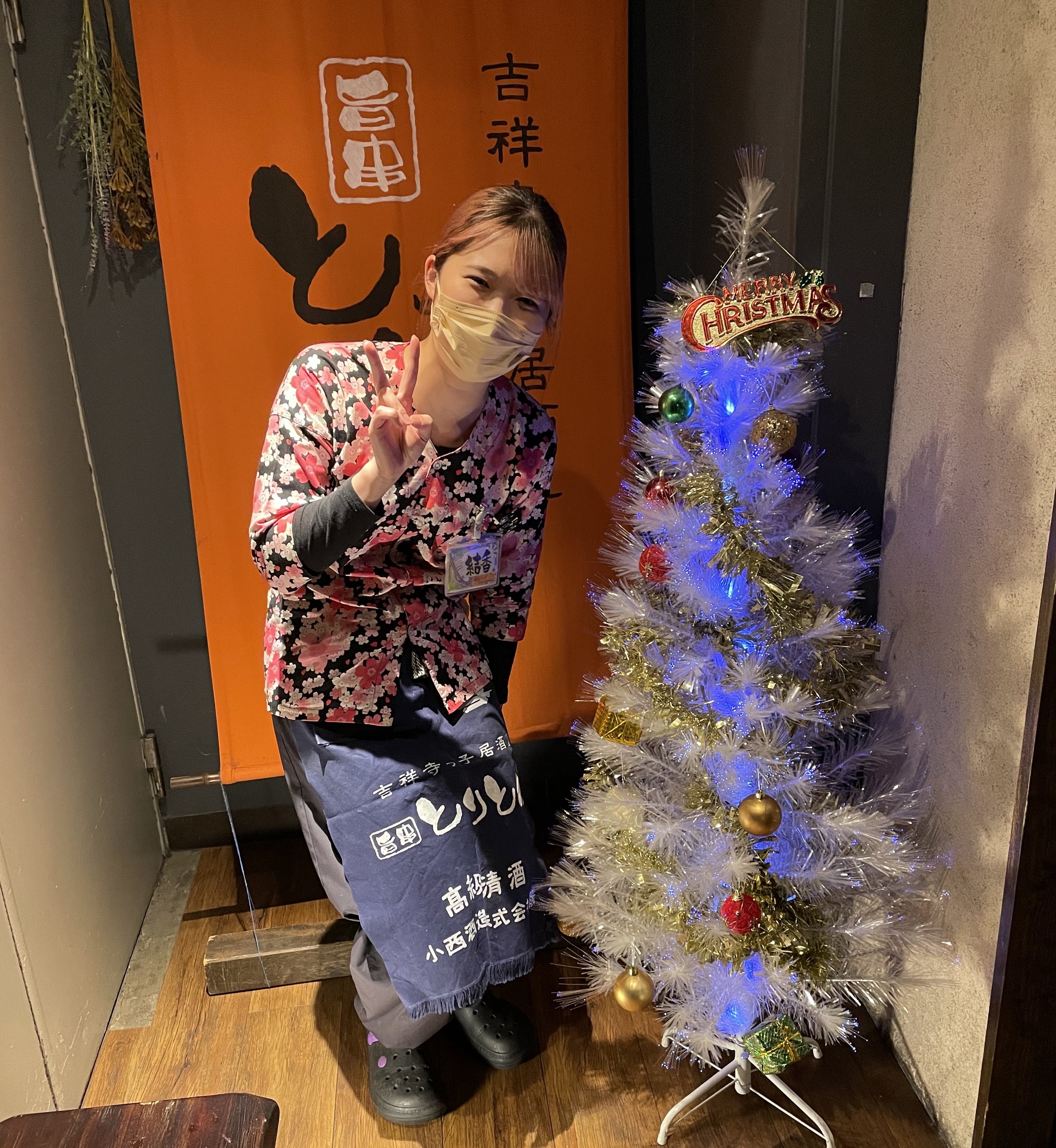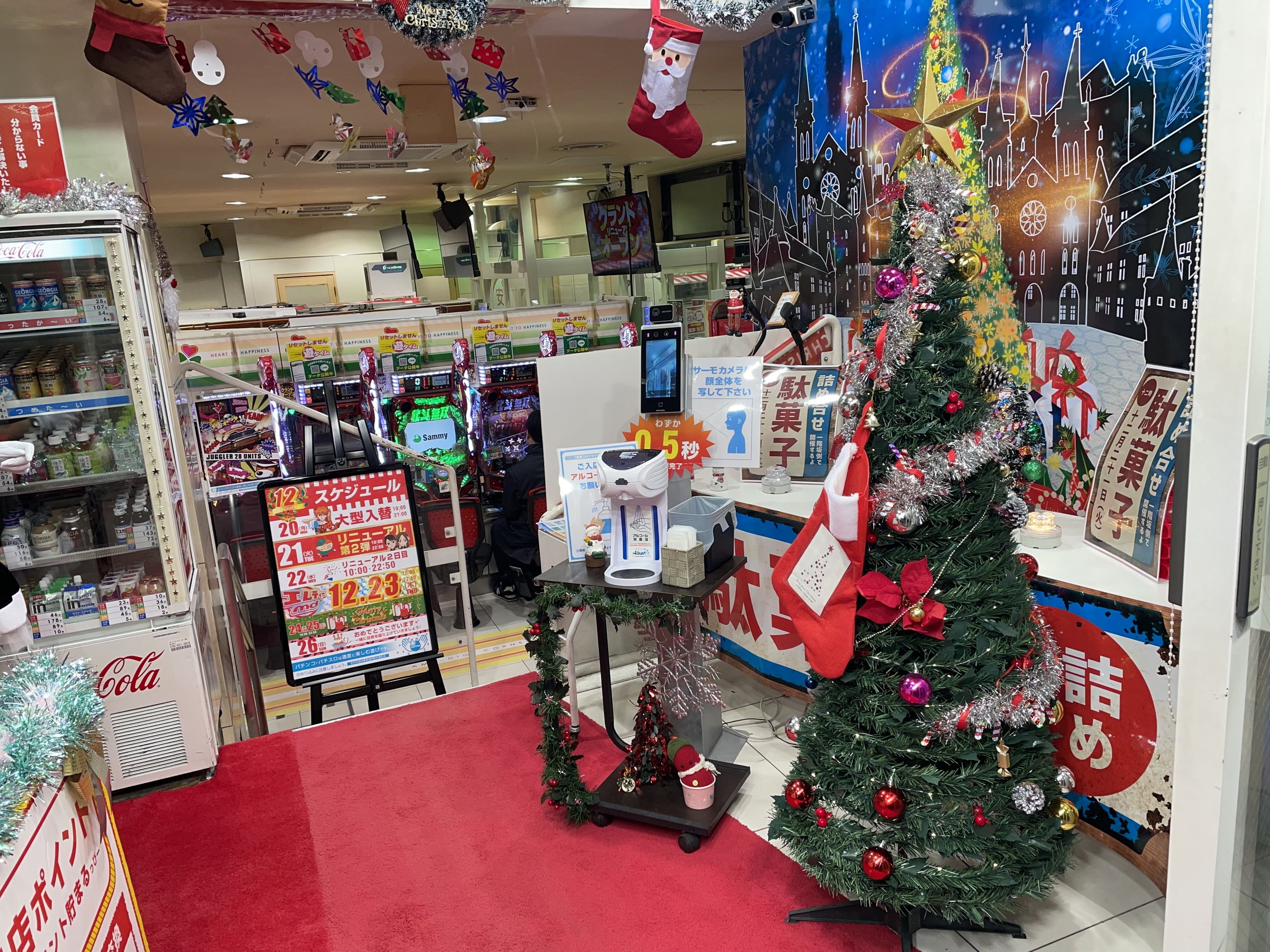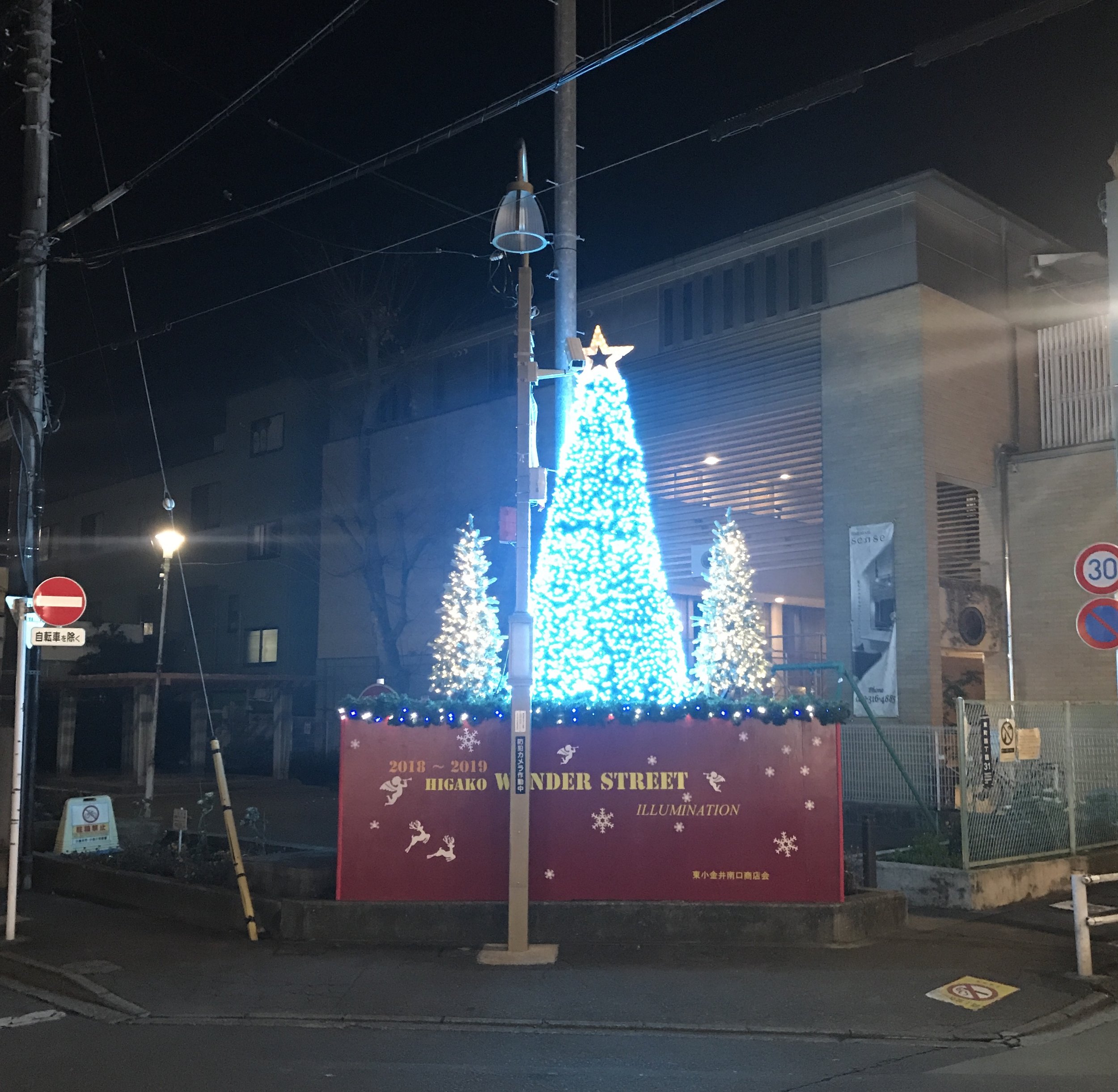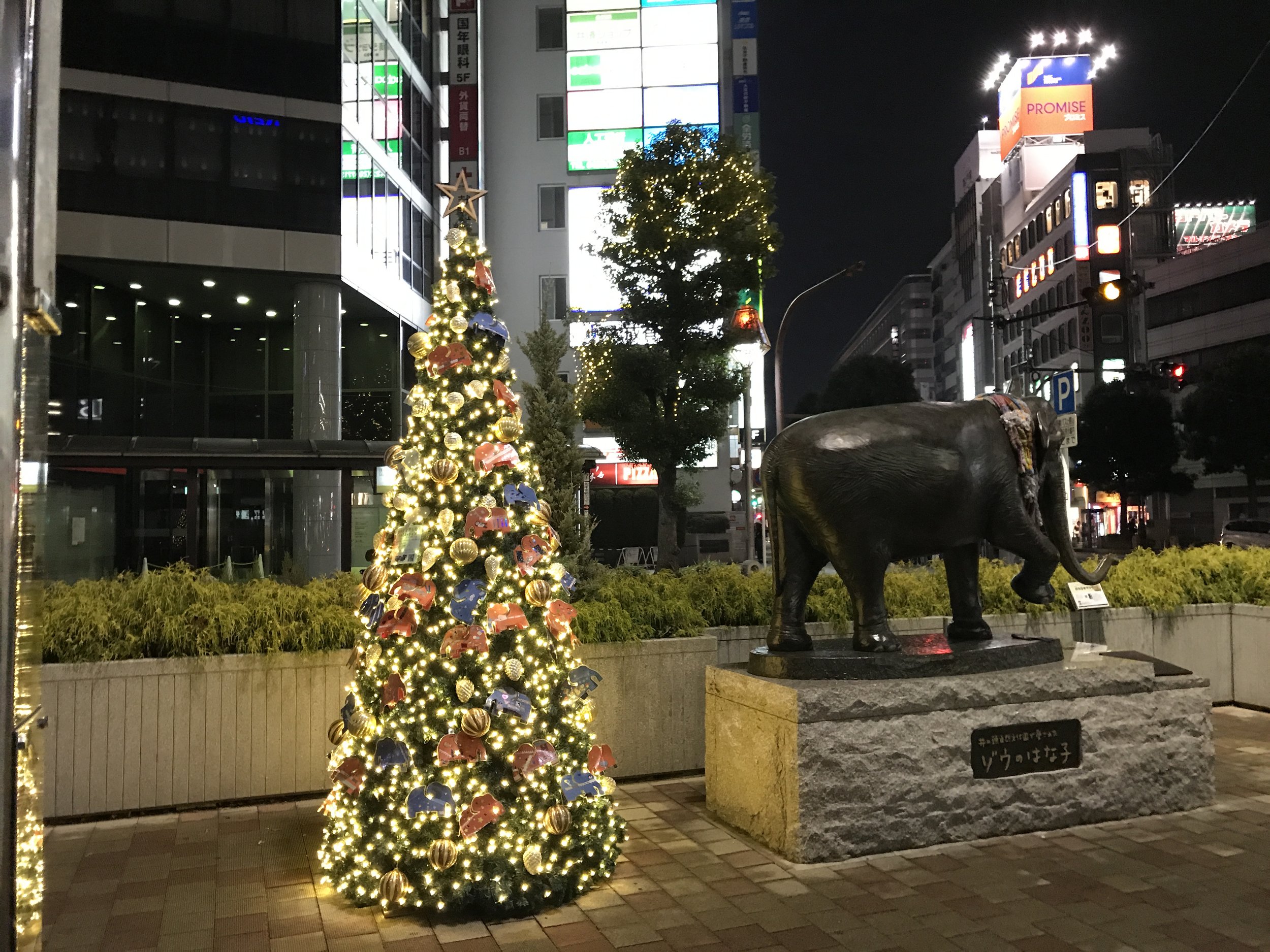Tokyo Christmas Trees
After years in Tokyo, friends still ask me if I miss Christmas in America. I don’t. Mainly because there’s a lot of Christmas in Tokyo. Christmas starts sneaking into Tokyo from the start of December and within a week or two covers everything. Western Christmas songs—in English—start pumping out of overhead speakers with gooey, echoey insistence. Glitzy western lights, wreaths, Santa hats, window snow and the whole caboodle of Christmas imagery starts invading every field of vision.
Even after I arrive at the calming quiet of my station’s bicycle parking lot, home for the day, a single rooftop reindeer, of wire and lights, and a motor that turns the head back and forth, watches me, creepily, as I drop a 100-yen coin to pay for parking. Bad taste knows no borders, I think, and then ride into my relatively undecorated neighborhood.
I’m not Scrooge-ish or Grinch-like, but the compulsion to copy Christmas works overtime in Tokyo. Stores and streets are at their most intensely westernized, most consumer colonized, during December. I try to resolve myself to surf any wave of good feeling, be it silly, tacky or tasteless, but every year it’s an effort to forgive the cheery advertising impulse of Tokyo, to get past it. It surrounds you.
The most common image among those adorning the city are surely the Christmas trees. They are everywhere, in videos, on signboards, in front of restaurants, popping up like glittering green mushrooms in the most unexpected places. Along with all the expected ones. Invariably western style, they’re totally different from the magnificent tradition of pine trees in Japanese culture. Fir and spruce trees show up throughout the history of Japanese art, from energetic dashes of sumi-e black ink to tastefully shaped bonsai trees.
But those are not the ones plopped in front of restaurants and businesses. What Tokyo puts up look more like upside-down triangles schoolkids made with blunt-tip scissors and green craft paper. And not a natural green, either, but a green so synthetic it de-naturalizes everything around it. The faux trees and tree decorations are no doubt paid for with petty cash doled out by harried store managers and arranged by part-timers on the last day before they quit. Or so they look to me.
Nor do the Christmas trees reflect anything of their closest Japanese equivalent—the genuinely lovely kadomatsu, a stately new year decoration of pine branches set on either side of a home or business door or gate, purifying and honoring all who pass between them. Trimmed with bamboo, plum tree sprigs, and circles of rice stalks, and without lights, they are striking and solemn. But they signal a passing through, an entering, rather than the stretching upward of a western tree.
And yet, I sympathize with the aesthetic impulse to nicen up unused, or over-used, spaces. I’m kind of in favor of decoration, all things considered. I can see why stores, restaurants, and offices want to liven things up before the next year arrives. Like them or not, and I’m a bit of both, they are celebratory baubles that, in passing, help stifle the anxiety, the fatigue, the dull routine that piles up like dirty shoveled snow at the end of the year.
Still, I can’t see why the trees are so overdone in Tokyo. Most parts of Christmas have a counterpart in Japanese culture already. There’s gift-giving, family gathering, spiritual recalibration, and shopping galore, all of it already well-rooted. So, why import another framework? Why not rework the one that’s already there? But apparently, before the year finishes, the mimetic compulsion for a perfect makeover, for something new, for something non-Japanese asserts itself. Maybe Tokyoites just need a different cheerleading squad to rouse the crowd at the final game of the season.
Strangely, the Christmas trees strike me as an expression of mono no aware, the Japanese aesthetic that finds the sadness in things. That’s usually reserved for less glitzy things, a fallen wet leaf or an abandoned, rusting bicycle. But the odd placement, unexpected presence, and cheap materiality of the trees of Tokyo Christmas hit me with the same kind of melancholy. The trees seem lonely, so far from where they should be, from their origins, lost, even in the middle of elaborate displays and lavish ad campaigns.
But then again, who doesn’t need another tree or two and a splash of green as the world turns colorlessly winter? I guess I do. I’ll admit the trees tickle me.
So, rather than Grinch and Scrooge about it, I focus on the irony of it all and play a little game with myself as I move around the city—I try to find the most incongruous tree set in a place I could never ever conceivably imagine putting a Christmas tree for any reason whatsoever.
And that little mental game cheers me immensely. Look at that one! I think, when I spy one hiding amongst the shelves, scrawled on a menu, or jammed in among power lines. I let them amuse me. It’s a present to myself.
Here are a few Tokyo Christmas trees I’ve captured before the store managers start taking them down.
It’s just natural to pose at the door. Italian restaurant.
Wait staff often walk customers to the door when they leave. I didn’t ask her to pose. She suggested it. Yakitori restaurant.
Entrance to a pachinko parlor.
The tree really makes that hallway.
Tree at a waiting room.
The sign on the wall says “Pets not allowed.”
Every pool hall in Tokyo has a Christmas tree
Impossible to get a pole-less angle.
Tree with traditional Christmas elephant. (Statue of long-time elephant from nearby zoo.)
Administration Building University
Drunk tree.
Somehow it blends right in











